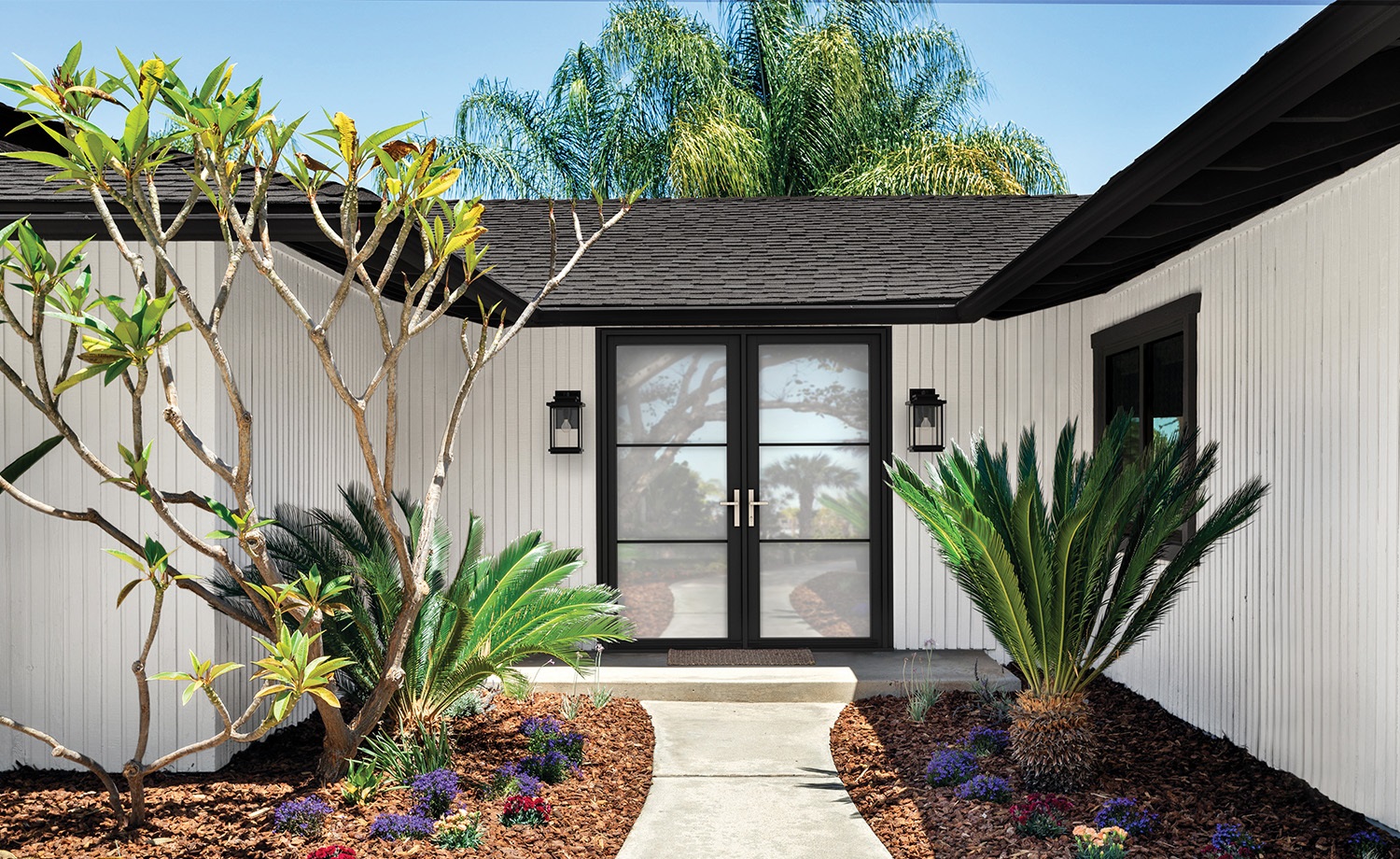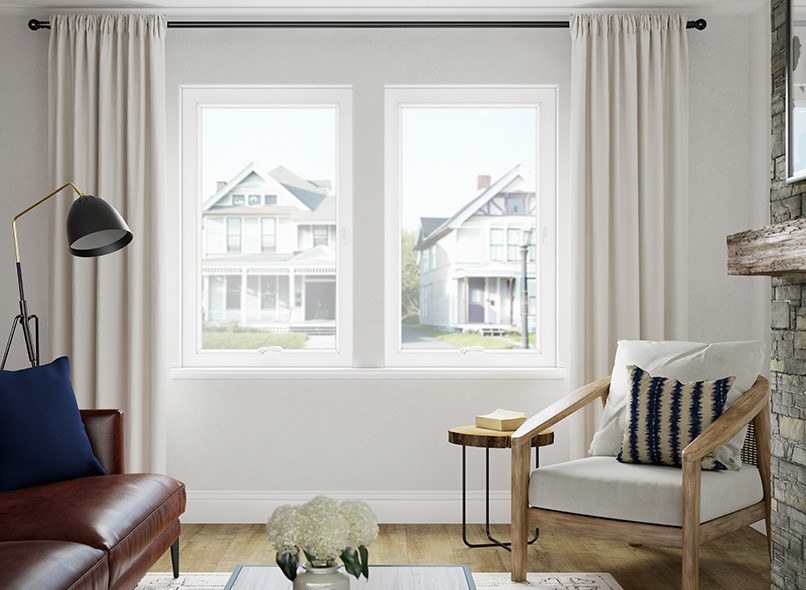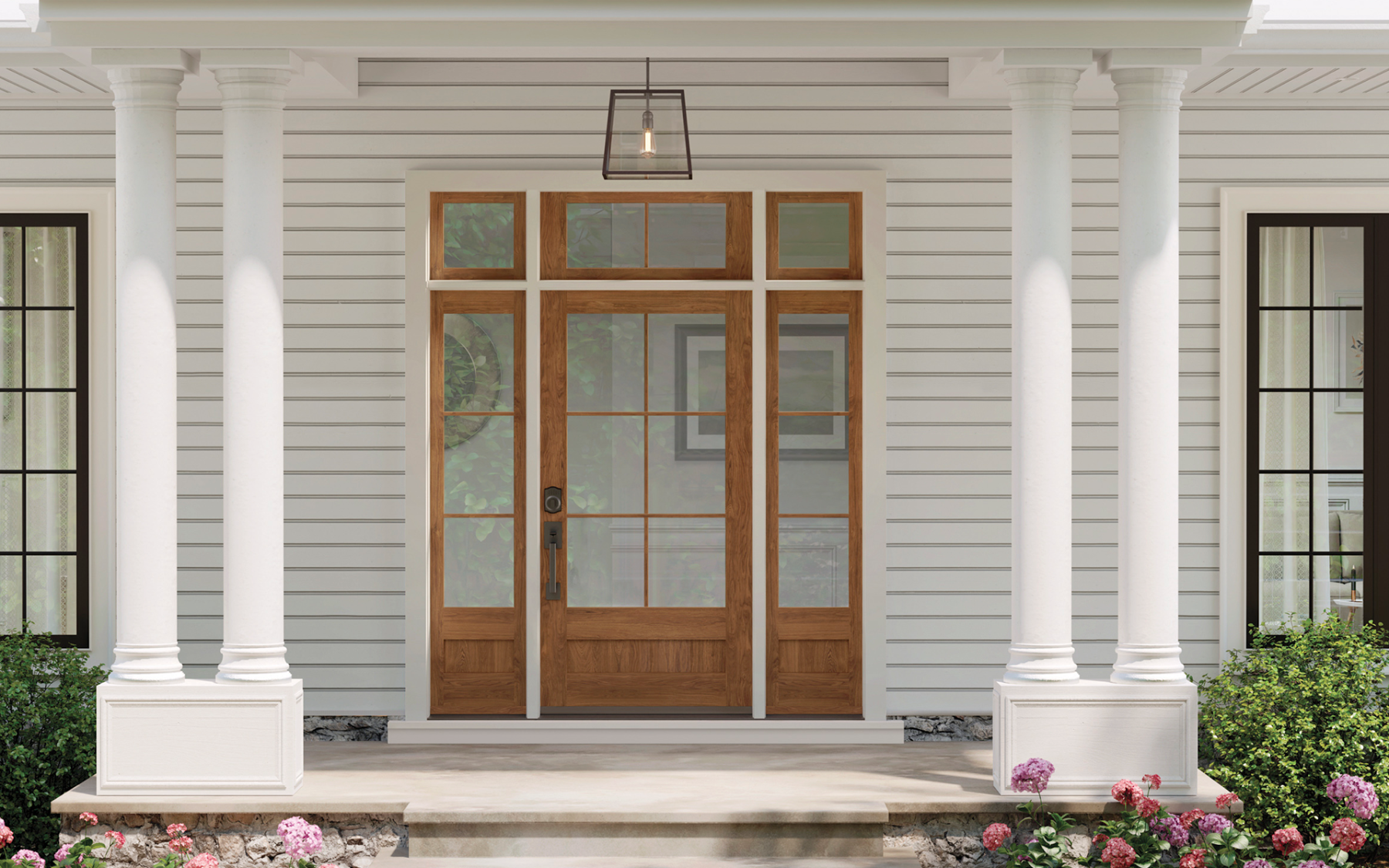Bark:
Areas of fiber from outside a tree.
Bevel:
Machine angle other than a right angle. That is, a 3-degree bevel which is equivalent to a 1/8-in. drop in a 2-in. span.
Beveled edge:
Edge of a door which forms an angle of less than 90 degrees with the wide face of the door, such as a 3-degree beveled edge.
Blister:
Spot or area where veneer does not adhere.
Book size:
The height and width of a door before prefitting.
Brashness:
Condition of wood characterized by low resistance to shock and by abrupt failure across the grain without splintering.
Burl:
Swirl or twist in grain of wood, which usually occurs near a knot but does not contain a knot.
Butt joint:
Joint formed by square edge surfaces (ends, edges, faces) coming together.
Chalk:
White or other color chalk marks used by mills for some form of identification marking defects for repair.
Chatter:
Lines appearing across the panel at right angles to the grain giving the appearance of one or more corrugations resulting from bad setting of sanding equipment.
Chicken tracks:
Expression for scars which give the particular effect of a chicken’s footprint. It is caused by air roots or vines.
Clustered:
When a defect described in the grading rule is sufficient in number and sufficiently close together to appear to be concentrated in one area.
Composition face panels:
A door face panel made of a wood derivative.
Core:
Innermost layer of section in flush door construction. Types of construction include: wood block; particleboard; wood block (lined); hollow; ladder; mesh or cellular.
Core (Wood Block):
Solid core of wood blocks or strips
Core (Particleboard):
Sold core of wood or other lignocellulose particles bonded together, cured under heat, and pressed into a rigid panel.
Core (Wood Block, Lined):
Solid core of two parts: a central wood block core bonded to two core liners of wood or other lignocellulose materials.
Core (Hollow):
Core assembly of strips or other units of wood, wood derivative, or insulation board, with intervening hollow cells or spaces which support outer faces.
Core (Ladder):
Hollow core composed of strips of wood, wood derivative, or insulation board with the strips running either horizontally or vertically throughout the core area with air cells and/or spaces between the strips and supporting the door faces.
Core (Mesh or Cellular):
Hollow core composed of strips of wood, wood derivative, or insulation board, interlocked and running horizontally, vertically, or diagonally throughout the core area with air cells and/or spaces betwe en the strips and supporting the outer faces.
Crossbanding:
Veneer placed between the core and face veneers of plywood face panels of wood flush doors in which the direction of the grain in 2-ply construction is at right angles to that of the face veneer.
Cross bar:
Type of figure or irregularity of grain resembling a dip in the grain, running at right angles, or nearly so, to the length of the veneer.
Cross break:
Separation of wood cells across the grain.
Dead knots (also open knots):
Openings where a portion of the wood substance of the knot has dropped out, or where cross checks have occurred to present an opening.
Delamination:
Separation of plies or layers of wood or other materials through failure at an adhesive joint.
Discolorations:
Stains in wood substances. Common are sap stains and blue stains.
Doze:
Form of incipient decay characterized by a dull and lifeless appearance of the wood, accompanied by a lack of strength and a softening of the wood substance.
Edge band:
Strip along the outside edges of the two sides and/or top and bottom of a door.
Face panels:
Hardwood plywood, high pressure laminate, hardboard, or composition panels or combination thereof, whether flat or configured, which are used for the faces of flush doors.
Fill (putty repairs):
Repair to an open defect with fast-drying plastic putty.
Finger joint:
Series of interlocking fingers cut on the ends of two pieces of wood which mesh together and are held by adhesive.
Gap:
Open splits in the inner ply or plies, or improperly joined veneer when joined veneers are used for inner plies.
Gum spots:
Well-defined openings between rings of annual growth, usually containing gum or pitch.
Kiln-dried:
Lumber dried in a closed chamber in which the removal of moisture is controlled by artificial heat and usually by relative humidity.
Knife marks:
Very fine lines that appear across a panel that may look as if they are raised resulting from some defect.
Knot (sound):
Cross section of a branch or limb with grain usually running at right angles to that of the wood in which it occurs.
Knot holes:
Voids produced by knots dropping from the wood in which they were originally embedded.
Knots (pin):
Sound knots less than 1/4-in. in diameter.
Lap:
Condition where veneers composing plywood are so misplaced that one piece overlaps the other and does not make a smooth joint.
Lock block:
Concealed block same thickness as a door stile or core which is adjacent to the inside edge of the stile at the midpoint and into which a lock is fitted.
Patches:
Matching wood pieces carefully inserted and glued into the door face after defective portions have been removed.
Pitch:
Bleeding resin.
Rails:
Cross or horizontal pieces of the framework of a wood flush door
Rail (bottom):
Bottom cross or horizontal piece of a door.
Rail (top):
Top cross or horizontal piece of a door.
Shake:
Separation along the grain, the greater part of which occurs between the rings of annual growth.
Shims:
A split repaired in a piece of wood veneer.
Show-through:
Irregular surfaces visible on the face of a wood flush door.
Standard door:
By industry practice, a standard door is book size in both width and height.
Stiles:
Upright or vertical pieces of the framework of a wood flush door.
Tape:
Strips of gummed paper used to hold edges of veneer together at the joints before gluing.
Telegraphing:
Visible irregularities in surface of face of plywood caused by corresponding irregularities in the underlaying plies such as core laps, voids, or extraneous matter.
Types (door styles):
The selection includes exterior entrance doors, interior passage doors, French or casement doors, bi-fold doors, side lights, patio sliding and swinging doors, thermal insulated-glass doors, louver do ors, screen doors, and specialty door products. Several selected types are illustrated here.
Vine streaks (marks):
Scars in wood generally caused by the stems of vines clinging by their hair-like roots to the tree trunk.
Warp:
Any distortion in the plane of a door itself and not its relationship to the frame or jamb in which it is to be hung. Warp includes bow, cup, and twist:
- Bow: A flatwise deviation from a straight line drawn from top to bottom; a curvature along the width of the door.
- Cup: A deviation from a straight line drawn from side-to-side; a curvature along the width of a door.
- Twist: A deviation in which one or two corners of a door are out of plane with the other corners of the door.
Wood flush door:
Stressed skin construction consisting of a core, stiles, and rails, and or/edge banding, two face panels, almost all of which are wood, wood derivative. materials, or high pressure decorative laminate.
Worm track or scar:
Groove or resulting scar tissue in wood caused by worms or other borers.



